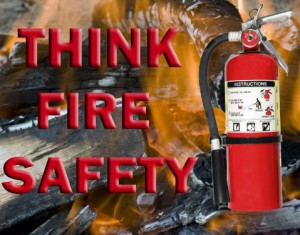For many homeowners with fireplace systems, fire prevention is a major concern. While properly maintained fireplaces will have a number of safety measures in place to prevent sparks and embers from getting near any other potentially flammable materials, there are a number of other ways homeowners can protect themselves against house fires. One major fire prevention tool that is often overlooked is the use of firestops, especially on pipes in attic areas. This is also sometimes called fire blocking.
What are firestops?

At New Buck Chimney Services, we understand the important role that each part of the chimney system plays. Much like the systems of the body, all parts must be in good working order for the system to function efficiently as a whole. That’s why we make it our priority to provide total chimney care to our customers.
Firestops are a passive method of fire prevention. Located around the outside of pipes and wires that travel through fire walls, firestops are designed to help prevent fire from spreading or passing through these openings. In addition, firestops should also be in place on fireplace or wood stove flue pipes, especially those that travel between living and attic spaces.
There are several common kinds of firestops that are typically found in residential homes. The first is a specially designed firestop mortar. Despite their similar names, firestop mortar is very different from the mortar used in masonry construction. These low density, light weight products are intended to be easily molded around pipes and openings to both insulate and create a fireproof barrier. Unlike traditional mortar, firestop mortar is not affected by changes in temperature and will not expand or contract in the heat or cold.
Another common type of firestop are intumescents. Intumescents are materials that expand when exposed to heat, and are typically made of hydrates, sodium silicates, or graphite. Intumescent materials are often used to cover wires or cables, as these may melt or burn during a fire. Lastly, firestop pillows made of intumescent or other fireproof materials are sometimes used in conjunction with other firestopping materials. More closely resembling soft bricks than fluffy pillows, they can be compressed and stacked into different spaces. Firestops can also be created using fire rated sheet rock or sheet metal.
Common issues with firestops
While modern building codes require that fireblocking be installed at all floor and ceiling levels, some older buildings have not been updated to meet the current standards. Because building codes are not retroactive, most buildings are only required to meet the standards set at the time it was built. However, as the standards have changed over the years, it is extremely important to have older homes professionally evaluated to ensure that they meet the current International Residential Code standards.
Recently built homes can also have issues with firestops. This is especially true in homes that have had recent updating or home improvement projects. Any new wiring, pipes, or plumbing in attic spaces can affect the existing firestopping; likewise, these new additions must have proper firestops added as well.
The most common issue firestops face is improper installation. Inexperienced plumbers, electricians, or contractors may incorrectly install firestops while working on home improvement projects. Incorrectly applied firestop mortars, intumescent materials, or firestop pillows provide a small amount of protection, but would not be 100% effective in the event of a fire.
Finally, if there has been any recent animal activity in your home’s attic, you should have the firestops checked to ensure they have not been damaged or compromised in any way. Small mammals such as squirrels or raccoons often chew or gnaw through wires, affecting any intumescent coating that may be in place.
